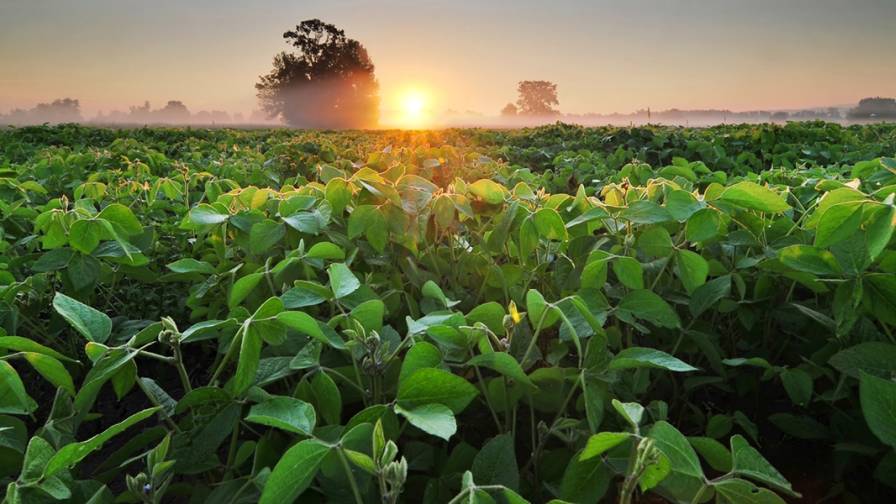What’s Next for Global Ag Economies and Input Providers After COVID-19?
Editor’s note: CoBank’s Kenneth Zuckerberg, Senior Economist, Corporate Strategist and Lead Industry Analyst, discussed how agriculture economies are more globally interdependent than ever at the recent AgriBusiness Global Trade Summit. Below is a snapshot of that presentation.
Every era brings challenges, but the end of the second decade of the current century has seen an unprecedented number of disruptions. Weather is often an issue. But let’s add to that a humanitarian crisis, economic fallout from current market conditions, socio-political influences, and a public health crisis most of the world was woefully unprepared for.
Kenneth Zuckerberg, Senior Economist, Corporate Strategist and Lead Industry Analyst for CoBank, presented some thoughts on what the U.S. ag inputs industry will look like when the country finally puts the current coronavirus issue behind us. Zuckerberg spoke to the attendees of the AgriBusiness Global Trade Summit™ held last month online.
The Current Situation
“The quick answer is new business models and approaches,” Zuckerberg says.
While most people compare COVID-19 to the Spanish Flu that ravaged the globe a century ago, Zuckerberg adds it to a list of economic disasters that influenced life throughout the 1900s and the early part of the 2000s, referencing the Wall Street crash, the Great Depression, the Holocaust and World War II, the various financial crises in the 1970s, 1980s, and 1990s, U.S. farm crisis, September 11, and most recently the 2007-2010 U.S. subprime mortgage crisis, which actually spilled over to create a global credit crisis.

Kenneth Zuckerberg, Senior Economist, Corporate Strategist and Lead Industry Analyst, CoBank
“The economic shock to global economies from COVID-19 is like none other of these events,” he says. “It’s bigger, and it’s likely to be longer in duration. As we set the stage, the main point here is, it’s not just a flu and a disease that a lot of people are getting sick and unfortunately dying from; it’s that plus a major shock to global economies.”
The economic challenges don’t end even when a safe, reliable vaccine is developed, Zuckerberg says. “When we think about what complicates a prediction of recovery and getting past this, the recent spike in new cases, is a critical factor making all predictions very difficult to make.”
The Effect on Farm Income
COVID-19 has had an enormous effect on farm economies in the U.S.
“Grain prices are well off their bottom, reached earlier this spring, but remain fundamentally low,” Zuckerberg says. “Both corn and soybean prices are below their 3-year, 5-year, and 10-year trends.”
Stripping out the government’s payments to growers suggest that U.S. net farm income is actually flat to down modestly. Taking it a step further, Zuckerberg says, “Farm cash receipts — they’re basically flat with 2011 levels, however, farm production expenses have risen. If expenses are above cash receipts, that, by definition, is negative for margins. What we’re looking at here is the largest farming business in the U.S. on average hasn’t made money in seven years. That’s very concerning.”
The Effect on Crop Inputs
Growers are a cautious and conservative group. Decreased farm incomes will certainly impact crop input purchasing. In addition to the pandemic, Zuckerberg lists a number of issues that will also affect the industry:
- Mega-Mergers of 2014 to 2016 — They were defensive in nature, and they were in response to the continued commoditization of farm inputs and declining profit margins.
- Excess Production of Corn vs. Use — Lower future ethanol demand has wide ramifications to how much corn we’re producing vs. how much we need to produce.
- African Swine Fever — A dramatic reduction in the Chinese hog inventory and continued uncertainty on animal feed requirements on restaurant and food service closures.
- Over Expansion of Fertilizer Capacity in the U.S.
- Trade Tensions — Disputes with several major ag export partners.
- Market Share Losses to Brazil, Argentina, and Ukraine — In various commodities including soybean, corn, and wheat)
- Regulatory Decisions — Recently, we had the glyphosate settlement, following lawsuits between Bayer and a variety of U.S. claimants. More recently we had some fanfare with dicamba being called for restricted usage.
Shrinking Input Margins
Zuckerberg asks a simple question: “How long are we going to ignore the decline in fertilizer and ag chem margins?” The answer is a bit more complicated.
Zuckerberg shared Zuckerberg shared operating margin data based on trailing Earnings Per Share (EPS) data from the Standards & Poor from 1995 and projected through 2021. Operating margins for fertilizer and ag chemicals peaked above 20% in both 2009 and 2013. That same ratio is currently at about 5%, or as Zuckerberg puts it, “in a trough.” It’s a trough that is likely to continue given excess supplies over demand and precision technology seeking to optimize (i.e., reduce) the amount of inputs applied relative to yield, Zuckerberg says.
With so many people sheltering in place, the demand for ethanol fuel and related products has diminished greatly, Zuckerberg says.
“In simple terms, ethanol production dropped 50% between mid-March and mid-April, and while it has recovered a bit, our estimates and of several firms that we follow and are clients of, our estimating the recovery and demand will not reach 100% over the next few years,” he says.
Opportunities
The economic shock and the more uncertainty there is, the stronger the U.S. dollar becomes Zuckerberg says. Of course, in this era, even the good news comes with a caveat.
“It’s nice to see a strong U.S. dollar in a headline, but a stronger U.S. dollar relative to the Brazilian real and other currencies makes U.S. ag exports more expensive and decreases our competitive advantage,” Zuckerberg says. “Not so surprisingly, we’ve seen (an increase) in purchases especially by China of product from Brazil and other places.”
And depending on which side of the issue considered, the recent spate of disruptive technologies out there can be either a threat or an opportunity.
“We’ve seen FBN (Farmers Business Network) come into the ag world trying to disrupt the procurement of goods between farmer and manufacturer,” Zuckerberg says. “The time has come for innovation and transformation.
“Ag input companies have the ability to really create, deliver, and capture all the value that ag technology promises,” he continues. “Heretofore, it has not been a game changer.”
Adapting to the Change
Zuckerberg suggest three steps to adapt to the post-COVID-19 world:
1. Ask the hard question. Strategic planning requires a high-level of emotional intelligence, and the courage and conviction to ask the hard question: Does your business model embrace the future or defend the past?
Zuckerberg references a lesson he learned earlier in his career in the investment industry: The four horsemen of business success or failure — fear, greed, hope, and ignorance. “The first three are all emotional. Ignorance is not. Even if you correct for ignorance, the other three will get you every time. The human condition unfortunately leads us to make mistakes time and time again.”
2. Think about innovation. Consider the strategies that can create customer value. This can involve a variety of issues from profit model to your processes to structure to service, to brand to customer engagement.
“If your product has become more commoditized, then the customer engagement, the customer success, the distinctive interactions you foster, how you provide value, advice, and service becomes the product,” Zuckerberg says. “The product — whether it be fertilizer, chemicals, or seed — that is an enabler to you to bring service value as opposed to the other way around. It’s a different way of thinking about the business of how farm inputs have traditionally been thought of, but it’s critical that the industry thinks this way.”
3. Act and avoid complacency. If you don’t, you wind up on a list of very large companies that failed to do so and have been relegated to the dustbin of history. Kodak failed to embrace digital photography. Sony (with its Discman) lost out to Apple’s iPod. Sears and Toys R Us couldn’t respond to Amazon. Motorola and Blackberry were left behind by Apple’s and Samsung’s phones. Blockbuster disappeared after Netflix started offering a streaming service.
“Those who forget the mistakes of the past are condemned to repeat them,” Zuckerberg cites the famous idiom, and adds: “Let’s not do that.”






